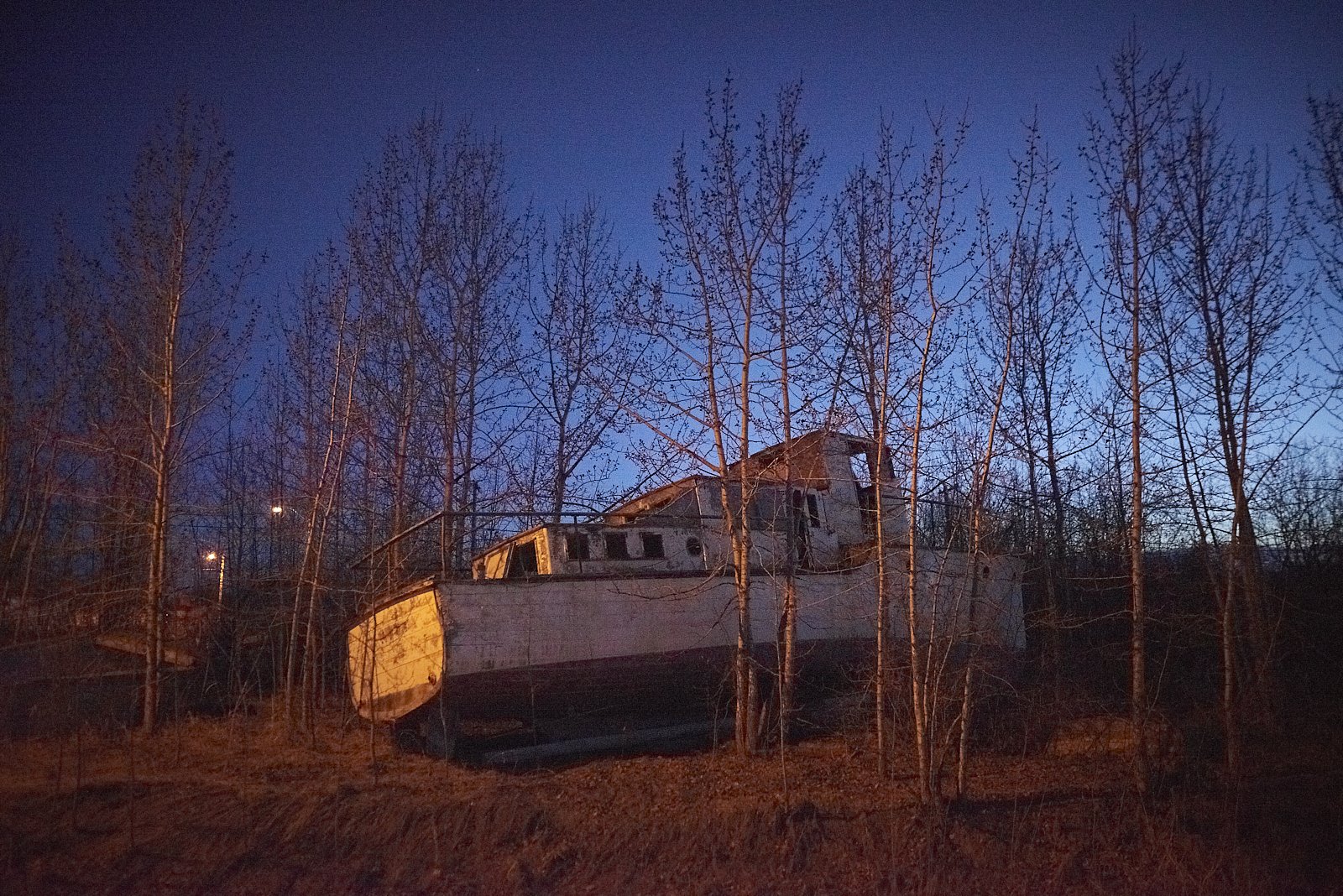On the outskirts of Hay River, I met a fisherman named Marius. Our introduction, like many others on this cross-Canada project, someone knows someone, who knows someone. I'm sitting at another stranger's kitchen table, my phone lying flat, ready to record.
Marius is Indigenous, born in the fall of 1945 and grew up in the village of Buffalo Narrows, which sits on a narrow stretch of land between Churchill Lake and Peter Pond Lake in The Norwest Territories. We wasted no time and immediately started talking about his father, who fished for a living and where Marius honed his skills catching pickerel, white fish, and pike; the wilderness was literally outside his front door, and I can only imagine what impact that would have on any child growing up. We didn't speak of his childhood, nor did I want to press the question after asking the first time.
Marius continued and calmly shared the places he'd been and fished, slightly laughing with pride as the words left his mouth "When I was old enough, I left home. I worked all over Canada: Southern Alberta, B.C., Saskatchewan, Ontario."..."I've done prospecting, worked in the sawmills, and drilled at some of the largest mines. Some holes we dug were 2000-3000 feet deep." He went on to explain the process of drilling, the pipe they used, the seasons, and what happens when things don't go as planned.
Diane, Marius's wife, walks into the room. We say "Hello" to each other, and she retreats to a well-worn chair in the living room. In my mind, this is where she quietly reads and takes her phone calls. They met in 1985 and married in 1998. They look at each other with gentle eyes and acknowledge one another when in the same room. She makes playful comments as I continue to ask Marius questions; she's proud of him and enjoys the attention her husband is receiving.
Marius moved to Hay River in 1973 and immediately started professionally fishing. First, it was with another outfit, and after eight years, he ventured out on his own and built his first boat out of wood with a couple of used motors. "My outfit cost around $1100. It was $400 to build the boat and $700 for the motor. I don't have wood boats now, they leak and are tough to maintain, but I've built boats for others throughout my life".
Marius mentions the fileting plant he now owns and operates across the street and the vast number of customers he services throughout the region, from Yellowknife, Fort Smith and other communities around the Great Slave Lake area. We talked about a frightening experience in rough weather where waves were high enough that you lost sight of the horizon for a few seconds, having to bail water by hand for hours on end, camping overnight on the shores due to high winds and white-capped waves, and of course the classic "big" fish tales. The largest trout caught in the area was a whopping 85 lbs.
One thing that caught my attention was Marius mentioning the ice conditions on Great Slave Lake- the interview was taken in May 2018 for context. "This past winter, we went out in January, and the ice was 19-21 inches thick; the winter before that, in the same spot, the ice was four feet. We had more than half the ice previously, and this year, it never froze to greater depths; we didn't make any more ice anymore." Since I started this project in 2014, I've noticed a common theme with many of the individuals I encounter. They're seeing drastic shifts in climate, weather, and their environments, and the impacts, for some, directly affecting their livelihoods.
My last question was, why fish? Marius responded, taking a few seconds to gather his thoughts, "I'm my own boss, and I can take a break at any time; I'm not working for nobody telling me you gotta be here. I like fishing, and it's like they say, it's in your blood. You want to quit some days; the next, I want to be on the water. I guess that's just how it goes."
You can also check out the APTN (Aboriginal Peoples Television Network) featuring Marius and other fishermen in Hay River HERE.


